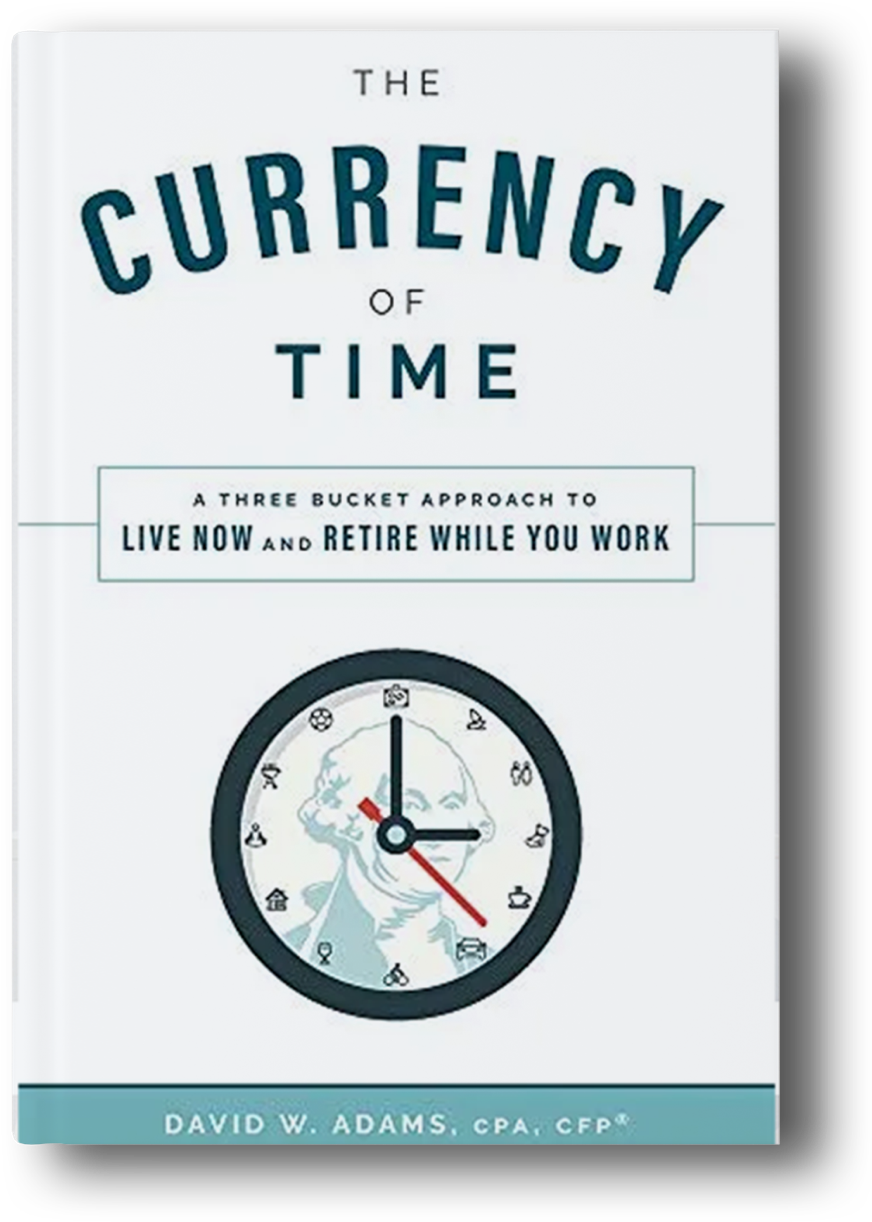Retire While You Work® Podcast
Join us as we discuss various topics to help you find the path to viewing money as a means to the true currency, TIME, and learn how to build more memories and experiences.
View All EpisodesJoin us as we discuss various topics to help you find the path to viewing money as a means to the true currency, TIME, and learn how to build more memories and experiences.
View All Episodes
What if you could do what you're passionate about and achieve a work-life balance? What if you were relieved of the pressure to have some massive amount saved?
Learn More
When it comes to investing vs. saving, it is important to understand exactly what the difference between the two is. We believe that both are extremely important and serve specific purposes within any financial plan in order to help create balance and fund both short and long-term goals.
Saving is when you put away money for either short-term goals or expenses that you know are going to come up in the next 1-2 years. When you are saving, you are putting the money in a savings account at the bank or a short-term CD that is going to be liquid and there when you need it. Since this money is there for a specific short-term expense, we never want to put it in the stock market. This is because a lot of unpredictability can happen with the stock market within 1-2 years. You don’t want to risk prices taking a drastic dip right when you need that money available.
Investing is utilized mostly to help fund long-term goals, whatever those goals may be. A few common ones are retirement, a beach house, kids education – you get the idea. Because these goals are longer- term, there is more time to weather the volatility of the market. When the inevitable down year in the market does come, as an investor, you don’t need to worry, since this money may not even need to be used for 5, 10, 15 years or longer. With a longer timeline, you can make growth, rather than liquidity, the priority.
With any financial plan, one of, if not the biggest risk is purchasing power erosion caused by inflation. By investing rather than saving and earning a rate of return that hopefully outpaces inflation, you are able to reduce this risk and build out a plan with the goal to make your money last for those long-term goals.
When it comes to saving the money you will need to fund your short-term goals, we almost always suggest just keeping this money as cash in a savings account or money market account. Although the interest is close to nothing on these accounts, the money is safe, liquid and has a certain amount of FDIC insurance attached to it. In other words, this money will be there for you when you need it.
With the money that is going to be invested for the long-term, the question then becomes, “what do we invest in?” If you are just getting started, generally the easiest and best way to invest is in broad diversified mutual funds or ETFs. These are going to provide you exposure to hundreds of different companies and reduce the risk of being invested in just one individual stock. If you participate in your workplace 401k, these are the same type of investments that you hold inside of that.
At the end of the day, your plan needs and should have both savings and investing strategies in it. As we have talked about throughout this blog, which one is appropriate is almost always decided by the time frame in which you will need the money. If the money is needed in the short-term, then that is most always a savings strategy. If the money is for long-term goals, then this is where investing strategies come into play. The best way to get started is to sit down and think about what amount of money you may need in the next 1-2 years. That should then be your savings. Anything beyond that is the money you should look to invest. And remember, for the money that is invested, stick to your plan and don’t constantly buy and sell based on your opinion of what will happen in the near future.
Opinions expressed in this blog are those of the author and not necessarily those of Raymond James. All opinions are as of this date and are subject to change without notice. This material is intended for informational purposes only and is not a recommendation of any kind. Please speak to your financial professional regarding your specific situation. Every type of investment, including mutual funds, involves risk. In addition, there are fees and expenses associated with investing in mutual funds that do not usually occur when purchasing individual securities directly. ETF’s are subject to market fluctuations and the risks of their underlying investments. ETF’s are subject to management fees and other expenses.
Adams Wealth Partners, LLC is not a registered broker/dealer and is independent of Raymond James Financial Services. Investment advisory services offered through Raymond James Financial Services Advisors, Inc. Securities offered through Raymond James Financial Services, Inc., member FINRA / SIPC
Neither Raymond James Financial Services nor any Raymond James Financial Advisor renders advice on tax issues, these matters should be discussed with the appropriate professional.
Links are being provided for information purposes only. Raymond James is not affiliated with and does not endorse, authorize, or sponsor any of the listed websites or their respective sponsors. Raymond James is not responsible for the content of any website or the collection or use of information regarding any website's users and/or members.
The running stock ticker is not a recommendation to buy or sell stocks of the companies pictured.

Securities offered through Raymond James Financial Services, Inc., member FINRA/SIPC, marketed as Adams Wealth Partners. Investment advisory services offered through Raymond James Financial Services Advisors, Inc.Adams Wealth Partners is separately owned and operated and not independently registered as a broker-dealer or investment adviser.
Certified Financial Planner Board of Standards Inc. owns the certification marks CFP®, CERTIFIED FINANCIAL PLANNER™, CFP® (with plaque design) and CFP® (with flame design) in the U.S., which it awards to individuals who successfully complete CFP Board's initial and ongoing certification requirements. CFP® holders at Adams Wealth Partners, LLC are: David Adams, Myles Zueger, Carson Odom, and Spencer Provow
CPA holders at Adams Wealth Partners, LLC are: David Adams, Carson Odom, and Christine Kinsley
Please note that all archived content is for informational purposes only. Investment decisions should not be based on the content provided herein. For the most up-to- date statistical information and analysis, please contact your financial professional.

The 2024 Forbes ranking of America’s Top Wealth Management Teams Best-In-State, developed by SHOOK Research, is based on an algorithm of qualitative criteria, mostly gained through telephone and in-person due diligence interviews, and quantitative data. This ranking is based upon the period from 3/31/2022 to 3/31/2023 and was released on 01/09/2024. Advisor teams that are considered must have one advisor with a minimum of seven years of experience, have been in existence as a team for at least one year, have at least 5 team members, and have been nominated by their firm. The algorithm weights factors like revenue trends, assets under management, compliance records, industry experience and those that encompass best practices in their practices and approach to working with clients. Portfolio performance is not a criteria due to varying client objectives and lack of audited data. Out of approximately 10,100 team nominations, 4,100 advisor teams received the award based on thresholds. This ranking is not indicative of an advisor's future performance, is not an endorsement, and may not be representative of individual clients' experience. Neither Raymond James nor any of its Financial Advisors or RIA firms pay a fee in exchange for this award/rating. Raymond James is not affiliated with Forbes or Shook Research, LLC. Please see https://www.forbes.com/lists/wealth-management-teams-best-in-state/ for more info.
Barron’s Top 1,200 Financial Advisors 2023, is based on the period from 09/30/2021 - 09/30/2022 and was released on 03/15/2023. 5630 nominations were received and 1,200 won. Neither Raymond James nor any of its advisors pay a fee in exchange for this award. More:https://www.raymondjames.com/award-disclosures/#2023-barrons-top-1200
Please note that all archived content is for informational purposes only. Investment decisions should not be based on the content provided herein. For the most up-to- date statistical information and analysis, please contact your financial professional.
Raymond James is not affiliation and does not endorse the above-mentioned organizations.
Nashville Wealth Management & Financial Advisors | David Adams CPA, CFP® | Copyright © 2024 | Privacy Notice | Legal Disclosure| Disclaimers
